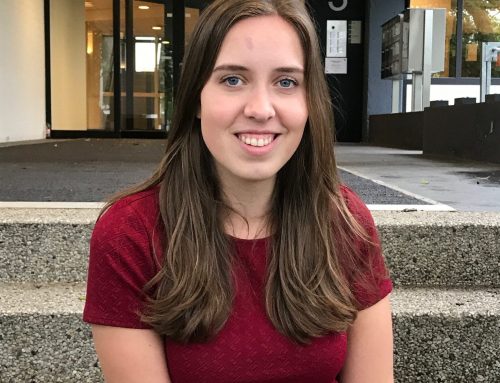The court of Midden-Nederland
In this article we want to take you on a journey with two of the cases in our team. The main areas we work in are protective measures and insolvency. Insolvency consists mainly of bankruptcies and debt restructuring for individuals (WSNP). The protective measures are full guardianship, administration and mentorship. The common factor in insolvency and protective measures is that the judge supervises the person who handles the assets of a third person or party. By far the most common protective measure is administration (± 25.000 cases in our court) A more detailed explanation of the Dutch system can be found (in Dutch) on the Dutch judicial system’s website (www.rechtspraak.nl).
The journey of a request for administration.
The model application form can be downloaded from the Dutch judicial system’s website (https://www.rechtspraak.nl/sitecollectiondocuments/bewindvoering-en-of-mentorschap.pdf). No legal assistance is required and the court fee for this journey is € 81,-.
When the application reaches the court it is booked in the court’s administrative system by an administrative assistant.
The assistant checks:
a. if the request is within the competence of our court
b. if the request is signed;
c. if the applicant is someone who, by law, is permitted to submit the request:
– The person concerned;
– Blood relatives until the fourth degree;
– The health care facility where the person concerned lives or who guides him;
– The mentor;
– The full guardian (in which case the full guardianship will change to administration);
– The public prosecutor;
– The city council, but only when the person concerned is in problematic debt.
d. who the interested parties are to be informed about this request;
It is mandatory for the court to inform a number of people of a request, such as the partner and the adult children of the person concerned and when there are none, the parents and the adult siblings.
e. the personal details of the applicant, the person concerned and of the interested parties, are checked in the national civil records. When the applicant is a legal entity the data of this entity are checked.
f. when the applicant is the person concerned and the proposed administrator is a professional (see g.), the administrative assistant investigates whether he wishes that the interested parties are not informed.
Dutch judges consider a person’s fundamental right on privacy to prevail above the Dutch law that makes informing interested parties mandatory. Recently we changed the way in which we inform interested parties. Instead of sending the integral request, which of course contains a lot of privacy sensitive information, we now only send a letter informing the interested parties that a request has been made and when the applicant, the concerned person and the suggested administrator will be heard in court .
g. if the suggested administrator is a professional it is checked whether he is approved by the LKB (National Quality Bureau).
Dutch judges have to supervise not only the individual cases but also the business operations of the administrator. This supervision is done at one court (on behalf of all the Dutch courts) and the relevant team is called LKB.
h. if the suggested administrator is not a professional his personal details are checked in the national civil records.
i. all required attachments are present.
The intended administrator has to declare that he meets the legal conditions for an administrator. (https://www.rechtspraak.nl/SiteCollectionDocuments/Bereidheidsverklaring-Bewindvoerder.pdf )
The interested parties can express their agreement with the administration and with the intended administrator (https://www.rechtspraak.nl/sitecollectiondocuments/akkoordverklaring.pdf). If they don’t agree, they can write to the judge or attend the court hearing.
j. if the person concerned is already under administration.
Whether a person is under administration is generally not public information. It is therefore possible that a third party doesn’t know that the protective measure of administration is already in order. Publication is possible in an online register https://curateleenbewindregister.rechtspraak.nl/, but only by decision of the judge or in a problematic debt situation. If another request concerning the same person is already pending at the court the requests are combined.
k. if the person concerned is admitted to the WSNP (the debt restructuring program).
We don’t want the judge that supervises the WSNP to be the supervising judge in the administration. We also don’t want the administrator in the WSNP to be the administrator in the administration.
l. furthermore it is checked whether immediate action is asked for or is necessary.
For instance when the person concerned will be evicted from his house within a few days unless an administrator is appointed. In these cases the administrative assistant consults with the judge. Often the judge will declare administration without a preceding court hearing. This hearing then will take place as soon as possible.
After having done all above mentioned checks, the administrative assistant plans a court hearing (by a judge) or an intake (by a legal assistant). The assistant also asks the applicant for missing information or attachments.
A request by the person concerned on the basis of a problematic debt situation with a proposed professional administrator is processed at an intake. In all other cases the request is processed at a court hearing. The administrative assistant prepares the case for the hearing.
The journey comes to a new stage at the hearing, where the judge or the legal assistant are assisted by the administrative assistant.
At the hearing, it is investigated whether administration is necessary, whether the person concerned is able to understand and assess the financial report of the administrator and whether the person concerned together with the appointed administrator is able to make decisions concerning spending’s over € 1500. If the concerned person can understand his finances enough to make these decisions together with the administrator as concluded during the hearing by the court, the consent of the supervisory judge is not needed.
If he is unable to understand and assess the financial report, the court will assess the report. If the concerned person is able to understand and assess the financial report the assessment by the court will be less extensive.
The judge also investigates whether the proposed (non-professional) administrator is capable and trustworthy.
Interested parties also are heard, when present.
After the court hearing the judge decides whether administration is declared and who the administrator will be.
After the intake the legal assistant advises the judge after which the judge decides as mentioned above.
The destination of this journey is almost reached when the judge’s ruling is sent to the person concerned, the interested parties, the administrator and the applicant. The next day the protective measure of administration takes effect.
The journey of a request for debt reconstruction of a natural person (WSNP)
The journey of this request usually starts long before it arrives at the court as the applicant has to prove to have tried to solve his debt situation outside of court first.
The WSNP journey is free of any court fee.
This request also starts at the administrative assistant who checks whether we are the competent court.
It is checked whether the applicant has an administrator. If so, the administration-dossier is added to the application. Then the court hearing is planned. When everything is (seemingly) straightforward the journey continues via the legal assistant. When there are any issues that raise questions the journey continues via a judge.
Before reaching the hearing, the legal assistant checks whether the application contains:
– an offer of partial payment, by an organisation that is legally authorised to do so to all creditors, that was rejected;
– all required attachments (e.g. a copy of the ID of the applicant);
– a list of all debts including an explanation by the debtor on the origin of the debt plus a yes or no to the question whether the creditor accepted the offer;
– an explanation of the debtor about the reasons for his being in the problematic debt situation (e.g. divorce, unemployment, addiction, not knowing how to handle money);
– if the request is within the competence of our court;
– if the request is signed.
If the application doesn’t meet all requirements the applicant is given a month to complete the shortcomings. If, after this month, the application still is incomplete the judge’s decision will be (without any court hearing) that the application is inadmissible.
As soon as the application is complete, the legal assistant prepares the application for the hearing. The debtor, the organisation that made the offer to the creditors and the protective administrator are invited. It is mandatory that the debtor is present.
The journey then continues to the hearing where it has to be established whether the debts haven’t been acquired in bad faith (unless the debts are older than five years), and whether the applicant can be expected to comply with the conditions set during the WSNP. A debt to the tax authority is always considered to be in bad faith. Not working and not applying for a job in the months prior to the request is also considered to be in bad faith as is spending money on luxury items instead of saving for the creditors.
During the WSNP, the person concerned is not allowed to obtain new debts, he is not allowed to pay debts which are subject to the reconstruction, and he is not allowed to sell any assets. He has to work full-time or to apply for a job at least four times a month. The supervisory judge (RC) can relieve someone from this duty, but usually only on the basis of a medical examination or when someone is on social benefit because of incapacity for work. He has to inform the WSNP administrator about everything that can have an impact on financial affairs and he has to give all money above a set minimum to the WSNP administrator for the benefit of the creditors. These requirements prove to be difficult for a lot of people. For this reason people are sometimes advised to ask for the protective measure of administration in addition to the WSNP.
The WSNP takes three years and can be extended by court to five years when the requirements are not completely met during the first three years. After this period the debtor is given a ‘clean slate’, which means that creditors can no longer ask for their money.
It is also possible that the WSNP is ended without this clean slate, because the requirements were not met and the person concerned is held responsible or if the period of three or five years has expired. Then a debtor cannot enter the WSNP again for a period of ten years. It is therefore in the interest of the debtor to establish whether he is capable of meeting the requirements.
This means for instance that if the debtor has a history of addiction to drink or drugs, there has to be a declaration of a rehabilitation clinic that the debtor has been ‘clean’ for at least twelve months prior.
Some information can be obtained from the dossier of the protective administration and from the protective administrator.
After the session in court the judge decides whether the applicant can enter the WSNP. If not he can appeal within 8 days. When he is admitted, a RC and a WSNP administrator are appointed, who cannot be the supervisor or administrator in the protective measure.
As we are a relatively new team we also experiment a bit with our supervision system. At our location in Lelystad the dossier of the protective administration and the dossier of the WSNP administration stay physically joined.. The protective administrator is asked to make an additional financial report to the WSNP administrator up until the date of the start of the WSNP. This report is then compared to the information the WSNP administrator delivers. This ensures that both administrators have the same financial information of the person concerned.
In our next an final session we will write about our supervision on the three types of administrator (bankruptcy, WSNP and protective measure).
BY: Mr. Ellen Penders en Mr. Jenny Hofman




